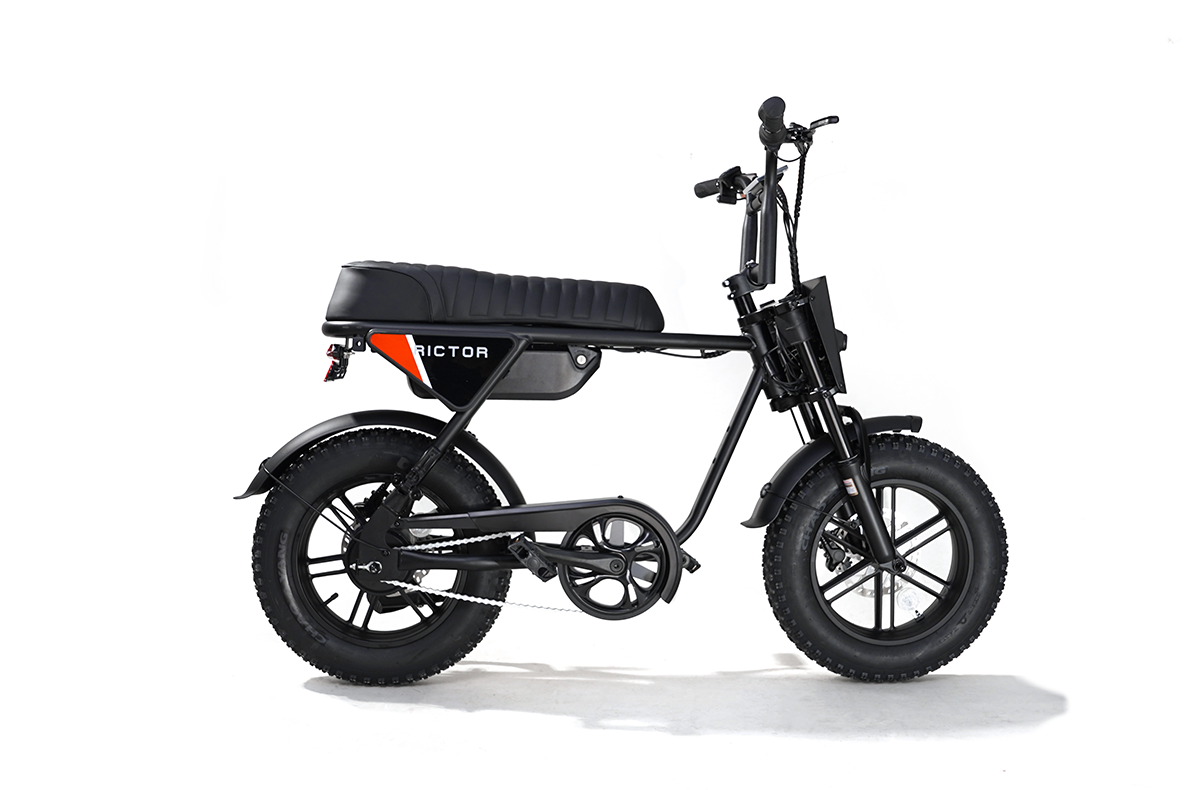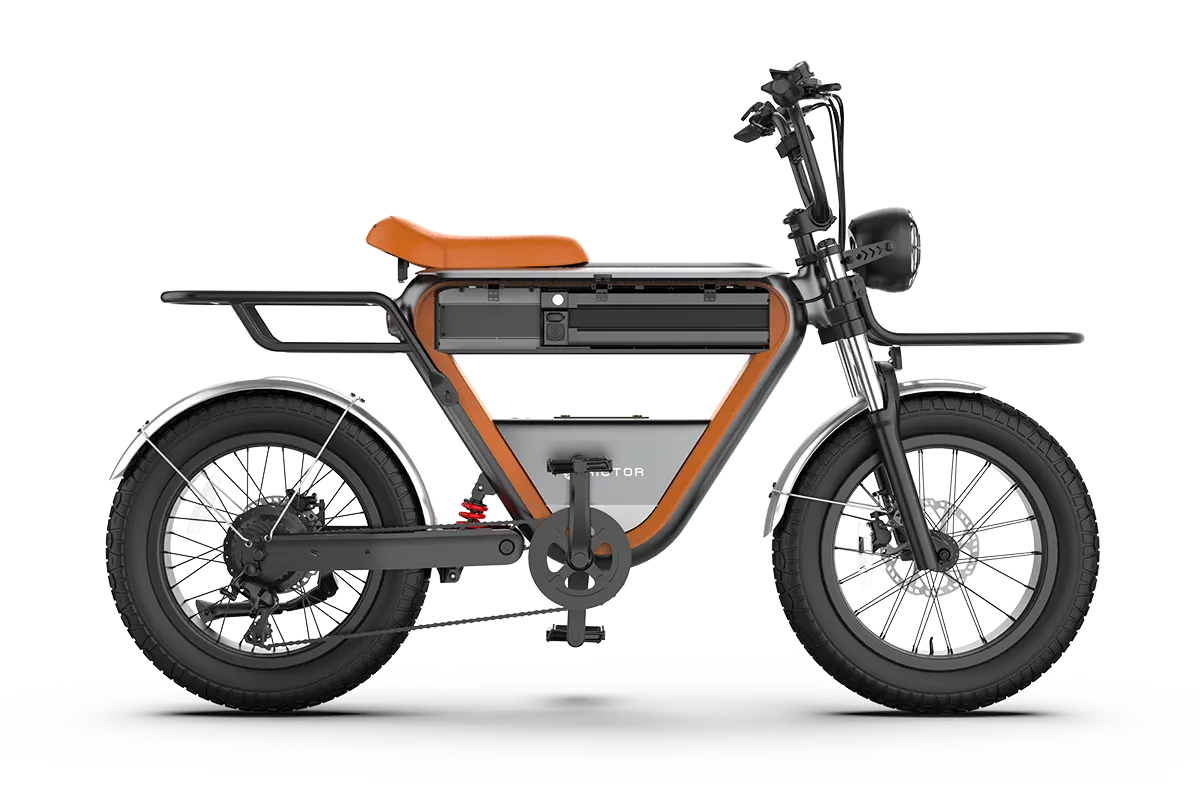
How big a difference is a bike capped at 20mph vs 28mph
If your electric bike is capped at 20 mph instead of 28 mph, does it actually impact your ride time or convenience?
For a short 6-mile round trip, riding at 28 mph would get you there in about 12 minutes and 50 seconds, while a 20 mph cap would take closer to 18 minutes.
How much difference does an extra 8 mph really make?
Is the Extra 8 mph Worth It
Many city and suburban routes are a mix of paved paths, gravel stretches, and even a few small hills.
On open roads, that extra 8 mph can shave a few minutes off your ride. But what about when you’re dealing with rough patches or steep inclines?
A faster e-bike usually has a bit more power, so you’ll tackle hills more easily and won’t feel like you’re fighting gravity as much.
Plus, it’s great when you’ve got mixed terrain, letting you keep your speed up where you can and power through tougher spots.
In stop-and-go city traffic, the extra speed helps you get back up to cruising speed quickly after stops, covering more ground between lights and intersections.
If you’re navigating traffic lights or congestion, a faster bike lets you move through those gaps with less delay, instead of feeling stuck at each slowdown.
While you may not reach 28 mph the whole way, the added speed can make commuting more efficient.
Does Going Faster Make Riding Riskier
Riding at 28 mph on an e-bike brings extra speed, but it also means you need to be more careful.
The faster you go, the less time you have to react if something suddenly changes on the road—like a car pulling out or a person crossing in front of you.
Braking also takes longer at higher speeds, so you need to keep a bit more distance from anything in front of you.
At 20 mph, there’s more room to stop smoothly, but at 28 mph, you’ll feel the need to stay extra alert to avoid sudden stops.
Riding faster also comes with other risks, especially in areas with pedestrians, other cyclists, or slower vehicles.
When you’re moving at 28 mph, it can be harder to judge how close you are to others, and any quick movements from people or vehicles around you become harder to handle.
Is Speed Draining Your Battery
Going faster on a 28 mph e-bike definitely affects your battery.
When you’re riding at top speed, the motor uses more power, which means the battery drains faster compared to cruising at 20 mph.
If you’re used to getting a certain range on a full charge, you’ll probably notice a drop when riding at higher speeds—often cutting down the distance by 20-30%.
For example, if your e-bike usually lasts 50 miles at a steady 20 mph, it might only go around 35-40 miles if you’re pushing it to 28 mph regularly.For longer commutes or trips, this makes a real difference.
The extra speed also means you’ll probably end up charging more often, which over time can impact the battery’s lifespan.
SEE ALSO 9 Tips Increase Range on Your Electric Bike for Free
Where Can You Ride
When you're deciding between a 20 mph and a 28 mph e-bike, it's important to know the local laws. E-bikes that go up to 20 mph are usually classified as Class 2 bikes.
These are generally allowed on most bike paths, trails, and roads, just like regular bicycles. You can ride them in a lot of places without worrying too much about restrictions.
But if your e-bike can reach speeds of 28 mph, it often falls into the Class 3 category.
Class 3 e-bikes are typically permitted on roads and bike lanes but might be banned from certain bike paths or trails, especially ones shared with pedestrians.
This is because going faster can increase the risk of accidents with people walking or riding slower bikes.
Some areas might even require you to wear a helmet or have additional safety gear when riding a Class 3 e-bike.
Different cities have different rules for faster electric bikes
New York City
Class 3 e-bikes (which go up to 28 mph) can only be ridden on the road. They’re not allowed in regular bike lanes or shared paths. If you’re riding a faster e-bike here, you also need to wear a helmet.
California
Class 3 e-bikes can go on streets and dedicated bike lanes, but they’re usually not allowed on trails or paths shared with pedestrians. Helmets are also required for Class 3 riders, especially in areas where there might be more people on foot or slower bikes.
Colorado
Some cities limit e-bike speeds on public bike paths. Even if your bike can go 28 mph, you might need to stay at 20 mph or lower on these paths to keep things safe for everyone, especially in busier areas.
Oregon
It has similar rules for faster e-bikes. Class 3 bikes are mostly allowed on roads and bike lanes but are often restricted from multi-use paths, especially in downtown areas. Some paths also have set speed limits, usually around 15 mph, to help keep things safe for pedestrians and slower cyclists.
Is Faster Always Smoother
Riding at 28 mph on an e-bike can bring a new level of excitement, but it also raises questions about comfort and stability, especially on uneven terrain or crowded bike paths.
At higher speeds, factors like bike weight, tire size, and frame design play a crucial role in maintaining a smooth and stable ride.
On a typical bike path or city street, hitting potholes or navigating bumpy surfaces at 28 mph can make the ride feel less controlled compared to a 20 mph e-bike.
Features like wider tires and good suspension systems become almost essential when riding at 28 mph, as they absorb shocks and provide better grip.
Wider tires offer improved traction, helping riders maintain balance over rough patches and through sharp turns, while a suspension system cushions the impact of bumps, creating a smoother ride.
The Rictor K1 is a 28 mph e-bike with suspension to smooth out the bumps.
Conclusion
Although there’s only an 8 mph difference between 20 mph and 28 mph, the experience feels noticeably different. With higher speeds, it’s important to stay mindful of safety.
The RICTOR K1 electric bike offers a top speed of 28 mph in pedal assist mode, with a range of up to 35 miles in electric mode and over 70 miles in pedal assist mode. This electric bike combines speed and impressive. range
FAQs
Does an 8 mph increase from 20 mph to 28 mph make a noticeable difference in commute time?
Yes, it can significantly impact your commute time. For a 6-mile round trip, riding at 28 mph takes about 12 minutes and 50 seconds, while a 20 mph cap extends the trip to around 18 minutes. This difference becomes more apparent on longer trips and can add up over time.
Is riding a 28 mph e-bike more efficient for city commuting?
In many cases, yes. A faster e-bike allows you to quickly return to cruising speed after stops, making it easier to cover ground between intersections and lights in city traffic. This added speed can help you navigate stop-and-go traffic and congested areas more efficiently.
Are there increased safety risks when riding at 28 mph?
Riding at 28 mph requires more caution due to the reduced reaction time and longer braking distance. Higher speeds make it more challenging to respond to sudden changes on the road, like pedestrians or cars pulling out, so staying alert and maintaining extra distance from other road users is essential.




